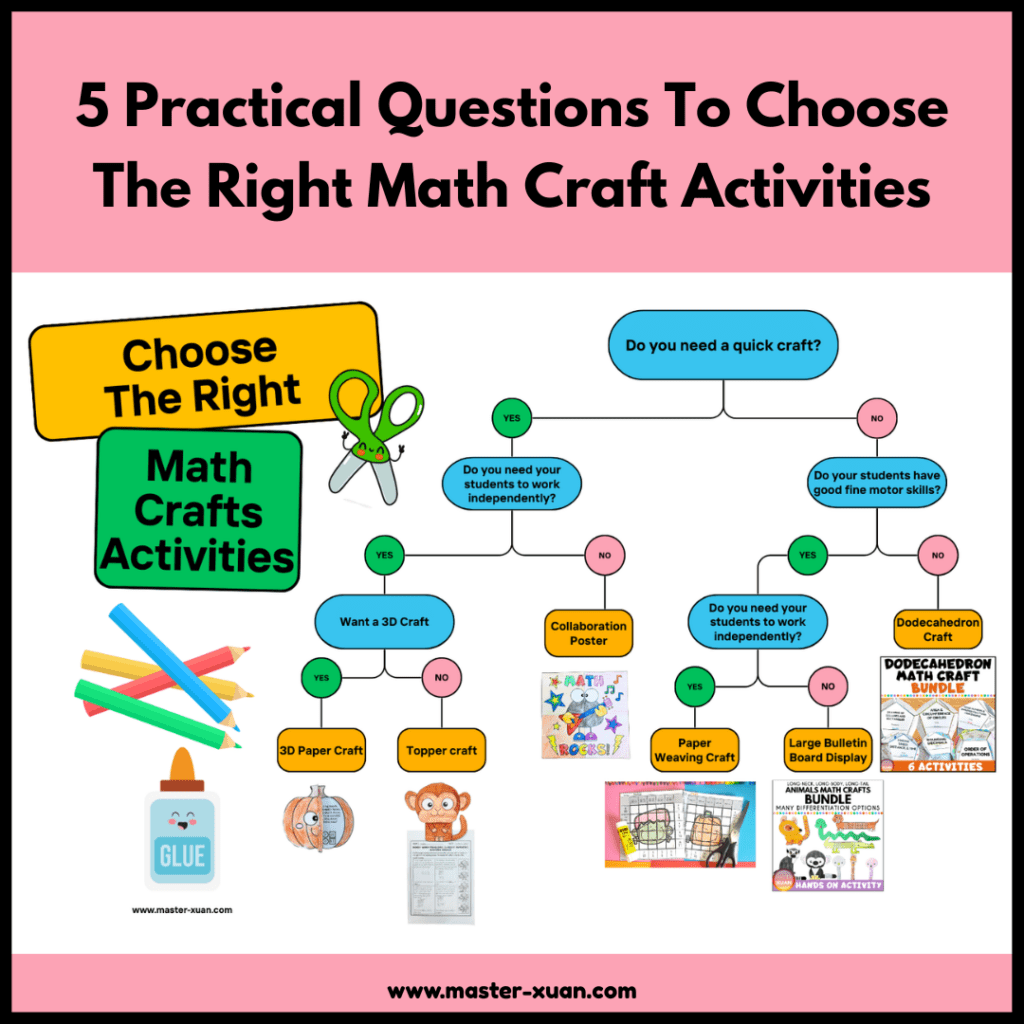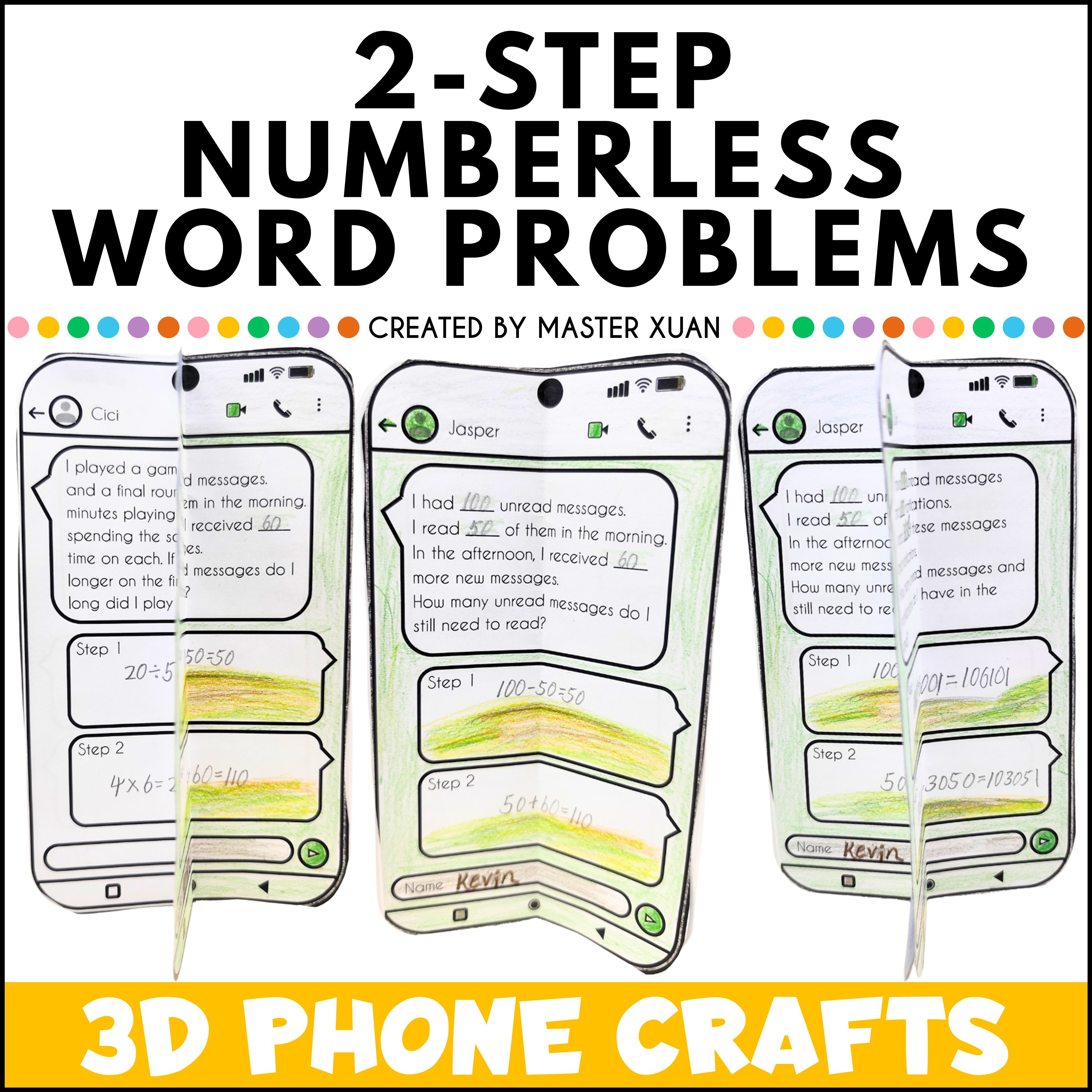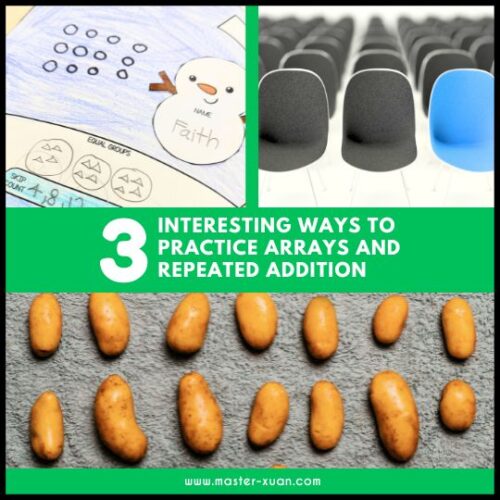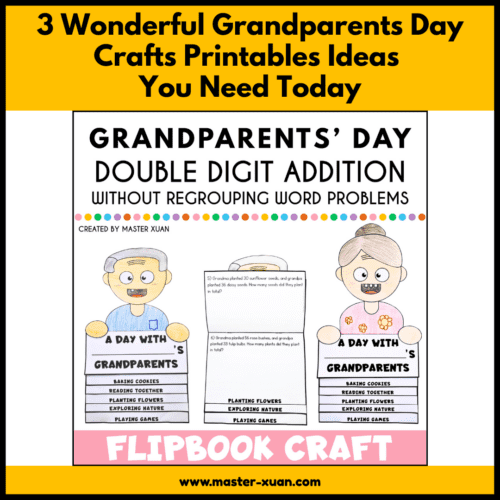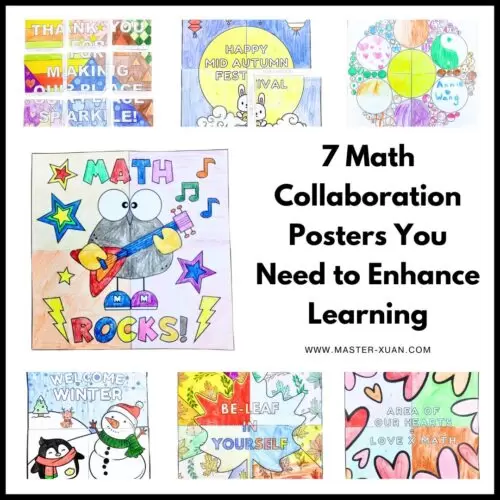Math craft activities. The very words can conjure images of engaged students, tangible learning, and a welcome break from worksheets.
But with a universe of possibilities out there – from collaboration posters to printable templates – how do you, as a busy educator, pinpoint the right math craft activities for your classroom?
Dividing headfirst into the first cute craft might seem appealing, but thoughtful selection is key to maximizing learning and minimizing frustration.
Before you gather your glue sticks and construction paper, take a moment to ponder these five practical questions.
They’ll help you navigate the sea of ideas and choose math craft activities that truly hit the mark.
1. What Specific Math Skill or Concept Do You Want to Reinforce?
This is the bedrock of effective math craft integration. Don’t let the “craft” aspect overshadow the “math.” Ask yourself:
- What learning objective are you currently addressing? (e.g., understanding fractions, identifying geometric shapes, practicing measurement, exploring patterns)
- Which concepts are your students struggling with and could benefit from a hands-on, visual approach?
- Does the craft activity directly and clearly connect to the intended mathematical learning?
Start with your learning goals, and then seek out math crafts activities that authentically support them.
2. What Are the Age and Developmental Levels of Your Students?
A complex paper weaving project might ignite the curiosity of older students but leave younger learners feeling overwhelmed and defeated. Consider:
- Fine Motor Skills: Can your students manipulate the materials required? Are there simpler adaptations if needed?
- Attention Spans: Is the activity length appropriate for their ability to focus? Can it be broken down into manageable steps?
- Prior Knowledge: Do they have the foundational understanding needed to engage with the mathematical concepts embedded in the craft?
Choose activities that are challenging yet achievable, fostering a sense of accomplishment rather than frustration. Adaptations and modifications are your best friends here!
3. What Materials Do You Have Readily Available and What is Your Budget?
Let’s be realistic. Elaborate projects requiring specialized and expensive materials can quickly become a logistical nightmare. Consider:
- Accessibility: What resources do you already have in your classroom or can easily obtain? (e.g., paper, cardboard, yarn, beads, recycled materials)
- Cost-Effectiveness: Can you achieve your learning goals with low-cost or no-cost materials?
- Preparation Time: How much time will it take you (or your students) to gather and prepare the necessary materials?
Sometimes, the simplest crafts using everyday items can be the most impactful. Don’t let a lack of fancy supplies deter you.
4. How Much Time Can You realistically Dedicate to the Activity?
Time is a precious commodity in the classroom and often the main reason why teachers hesitate to incorporate crafts. Be honest about the time you can allocate for the math craft activity, including:
- Instruction Time: How long will it take to explain the mathematical concept and the craft instructions?
- Creation Time: How much time will students need to complete the activity? What’s your ideal time balance between the crafting process and the mathematical learning in a math craft activity?
- Reflection/Discussion Time: Will you have time to discuss the math learning that occurred during the craft?
Choose activities that fit within your lesson structure or can be adapted to shorter time slots.
If you don’t want to spend too much time on the craft but want to do it to engage students, choose 1-page craft template.
To save coloring time, print in color. Or let students color them as an early finisher activity, brain breaks, calming activity or during pockets of time.
To save cutting time, pre-cut the pieces for your students.
However, some elaborate crafts can wow your students and make them more excited about the activity. So to save time on it, make it into a small group activity to make it more manageable.
5. What is the Intended Learning Experience and Outcome?
Think beyond just the finished product. What do you want your students to do and learn during the crafting process?
- Collaboration: Does the activity encourage teamwork and communication?
- Problem-Solving: Does it require students to think critically and find solutions?
- Visual Representation: Does it help make abstract concepts more concrete and understandable?
- Engagement and Motivation: Will the activity spark curiosity and make learning enjoyable? Is it to supplement a certain theme or holidays?
Consider the learning behaviors you want to foster and choose crafts that naturally encourage them. A well-chosen math craft can be a powerful tool for engagement, understanding, and retention.
Related Read: 7 Math Collaboration Posters You Need to Enhance Learning
Final Thoughts
By thoughtfully considering these five practical questions, you can move beyond simply “doing a craft” and strategically select math craft activities that are meaningful, manageable, and truly contribute to your students’ mathematical growth.
But if you need some more guiding questions for specific type of math craft, check out the simple flow chart below for your reference:
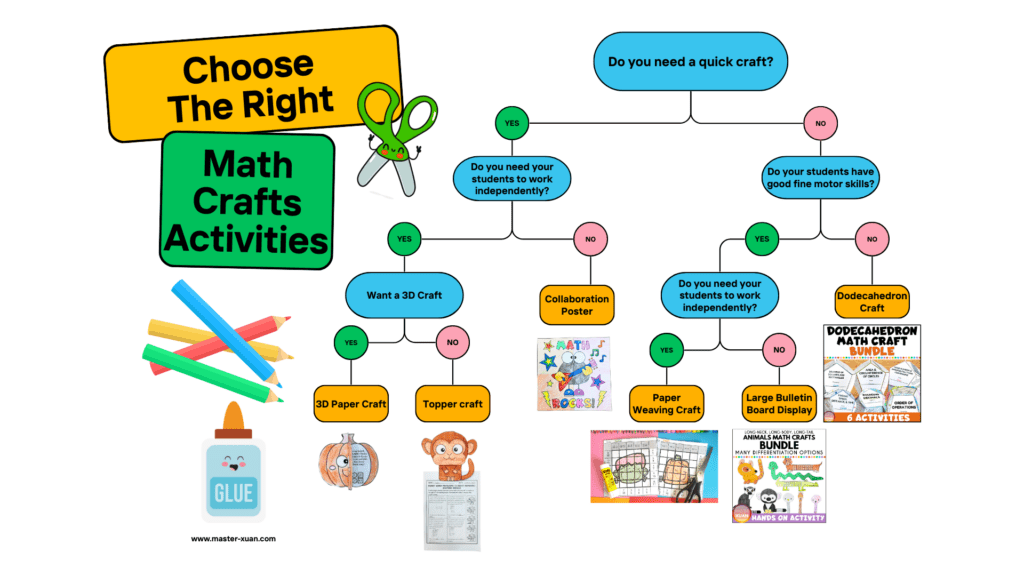
Happy crafting, and happy learning!
Want a free craft?
Enter your personal email address to get it for free below!
Here are some pins that you can save to bookmark this post. Save them to your Pinterest Board now! ↓




